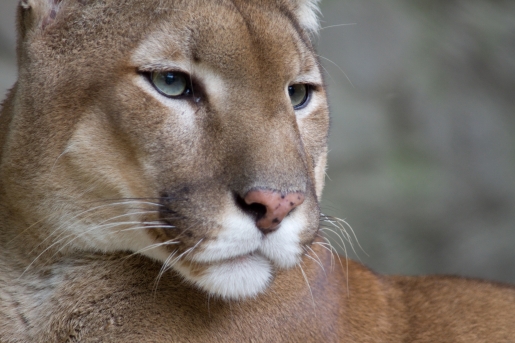A couple of days ago, I was in one of our local feed stores buying The World's Best Cat Litter...which actually is the best I've found even though it is depressingly expensive. Behind the counter was a sign advertizing something to kill moles on sale for 50% off. I asked the young man ringing up my sale what it was.
"It mimics the worms they eat."
"So it's poisonous?"
"Oh yeah," he said, pleasantly.
I then proceeded to lose it. "That is so stupid. Moles do more good than they do damage." I grabbed my cat litter and stomped out.
Since then, I've felt bad. Both of our feed stores, all our hardward stores, and all the grocery stores in town carry products to kill what we consider "pests." They are supplying what people want to buy. It would be nice if they had a clue about the ramifications of all those toxins, but like that kid I yelled at, they don't.
A couple of days later, I was offered a load of firewood by an elderly man in our community. He's a volunteer at a local non-profit and he was helping split some trees that had been removed. While we were talking, I noticed he had a box of mole killer in a bag on his front seat.
"Moles are good," I said, lamely.
Years ago, I saw a maintenance man at our local college opening one of a dozen gopher holes and pouring poison in. Here on the north coast of California we do have a terrible gopher problem (which saved us from all speaking Russian)(see my comment)--a totally unwinnable gopher problem. (I know unwinnable is not a word, but it should be.) I was then, and still am, a volunteer at that college. I marched straight into the dean's office, and she put a stop to the college using poison right then and there.
So here I am, sorry I yelled at that kid, and hopefully trying to convince a few more people not to use poisons to eliminate anything, but especially not moles. Is a bumpy little trail in a lawn really worth poisoning a myriad of underground organisms? (I won't ask about having a useless lawn in the first place.) I'll just give you some facts about moles:
- Diet
- They eat grubs, earthworms, beetles, beetle and other larvae, ants, wasps, flies and other insects.
- That is why moles are often a 'menace' on golf courses and in lawns. The use of fertilizer and the care of grass attracts worms and grubs, which in turn attract moles.
- Benefits
- They keep the earthworm population in check; People think earthworms can never be a bad thing, but in fact they can. Too many earthworms cycle forest litter too quickly, causing topsoil loss, and nutrient loss.
- Their tunnels aerate soil; plant roots need oxygen; mole tunnels provide habitat for salamanders (which eat slugs), snakes (that eat moles, voles, mice and gophers,) lizards, and ground dwelling bees.
- They eat insects.
- Their tunnels create channels for water to run off, preventing damaging erosion.
- Poisons used to kill moles applied in your home and landscape can move (through those same tunnels) and contaminate creeks, lakes, and rivers which, in our case, all lead to the ocean.
- Here's a warning from UCDavis: Confine chemicals to the property being treated and never allow them to get into drains or creeks. Avoid drift onto neighboring properties, especially gardens containing fruits or vegetables ready to be picked.
I'm always tempted when I read a warning like this to say, WHAT ARE WE THINKING? Why would we risk poisoning our own property? Most of us have wells, and the ones who don't get their water from the Noyo River. Where do we think the water in our wells comes from, or the water in the river? And do we think that the only creature we are going to kill is our target pest? That it will conveniently curl up and die underground. What about the worms that eat its remains, and the birds in our yard eating those worms?
I've done bird rehab for years. Once you've seen an owl or a hawk die from eating a poisoned "pest," you will finally get it. Here on the coast the main predators on gophers are Great Blue herons, housecats and the voracious long-tailed weasel, which can wipe out an entire colony of gophers in an afternoon. The American kestral's main food source are voles. You poison one, you poison them all.
 |
Long-tailed weasel
itsnature.org |
PRECAUTIONARY STATEMENTS
HAZARDS TO HUMANS AND
DOMESTIC ANIMALS
CAUTION: Keep away from humans, domestic animals and pets. If swallowed, this material may reduce the clotting ability of the blood and cause bleeding.
NOTE FOR PHYSICIAN: This product reduces the clotting ability of the blood and may cause hemorrhaging.
If poisoning occurs, intramuscular and oral administration of Vitamin K1 are indicated, as in poisoning from an overdose of bis-hydroxycoumarin.
For human cases, Vitamin K1 is antidotal at doses of 10-20 mg total (not mg/kg). For animal cases, Vitamin K1 is antidotal at 2-5 mg/kg.
Repeated doses may need to be given up to two weeks (based upon monitoring of prothrombin times).
ENVIRONMENTAL HAZARDS
Do not apply this product directly to water, or to areas where surface water is present or the intertidal areas below the mean high water mark.
REALLY?












